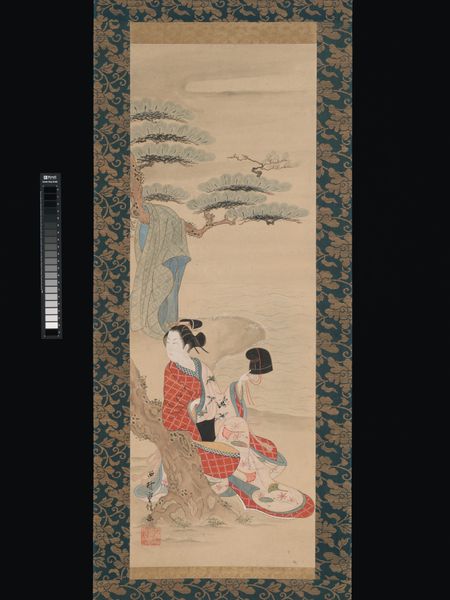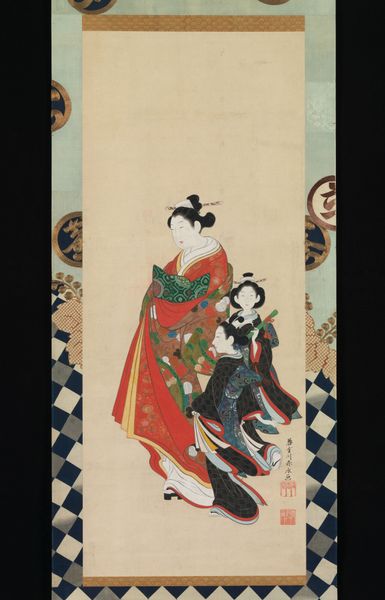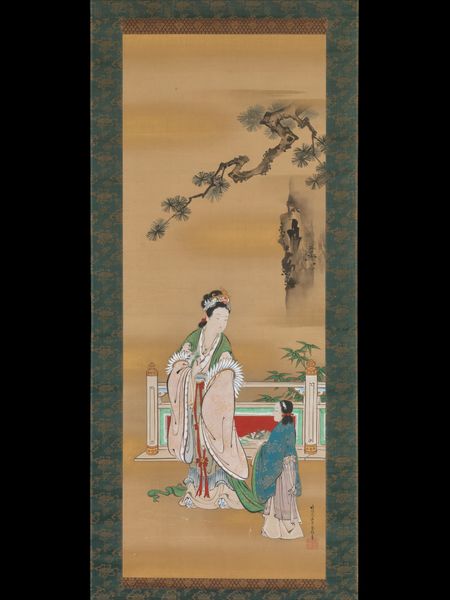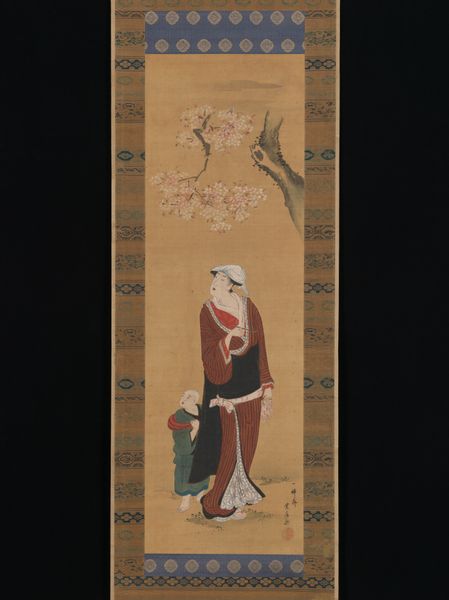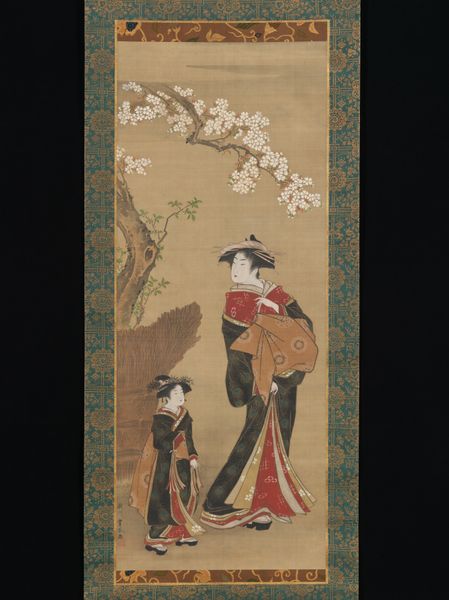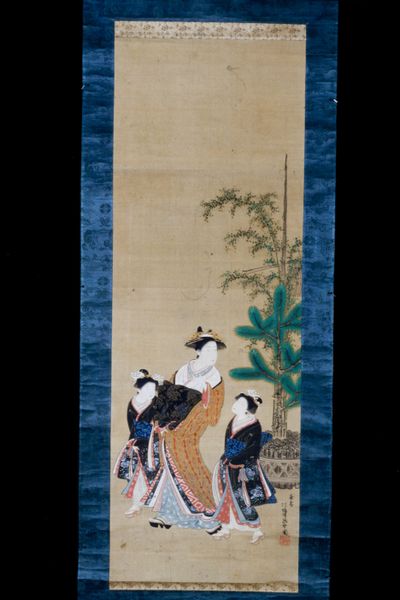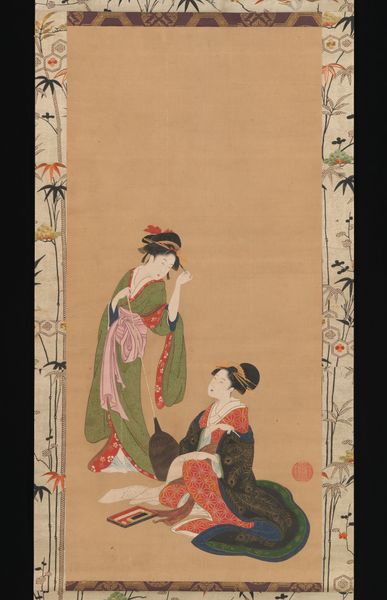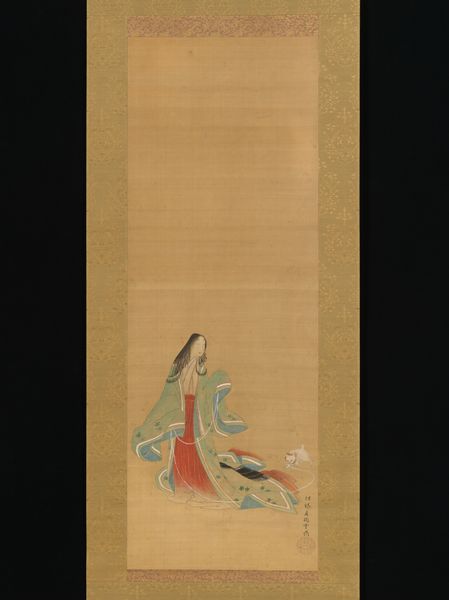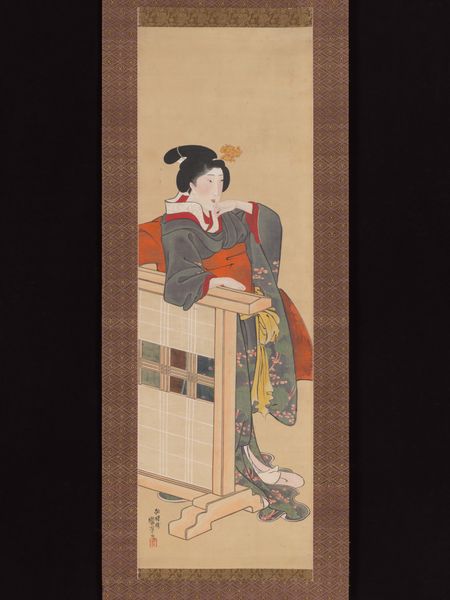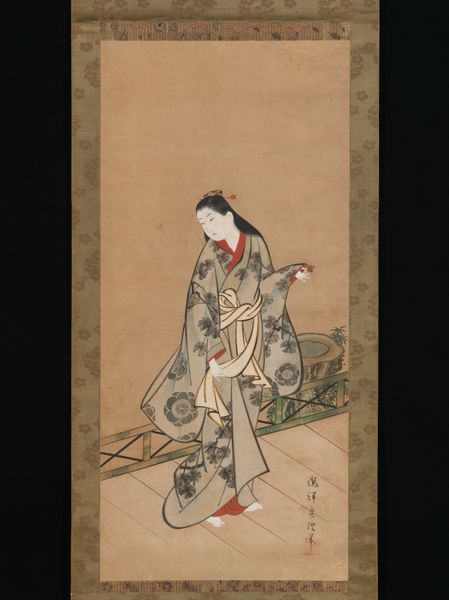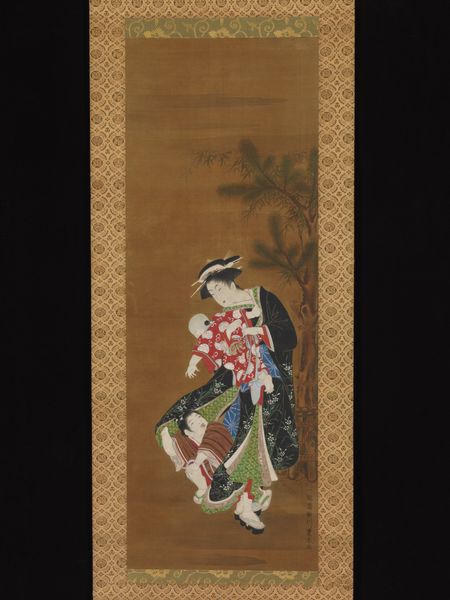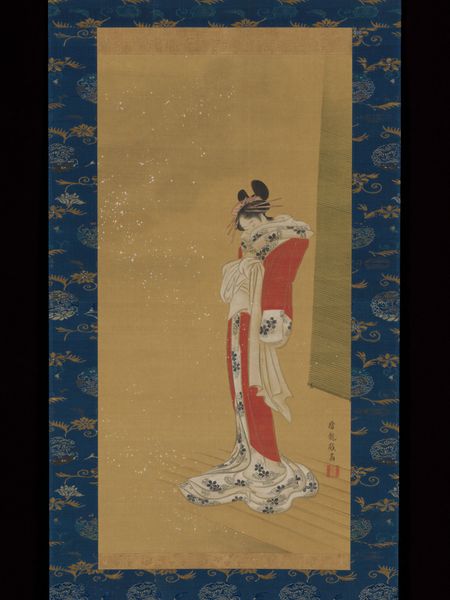
painting
#
painting
#
asian-art
#
ukiyo-e
#
folk art
Dimensions: Image: 33 11/16 × 13 11/16 in. (85.6 × 34.7 cm)
Copyright: Public Domain
Editor: This scroll painting is "Courtesan and Two Attendants on New Year's Day," created in the 1780s by Isoda Koryūsai. It feels surprisingly intimate, considering the artist and subject matter. What kind of symbolism should we look for here? Curator: The painting uses New Year's Day imagery, a culturally significant symbol of renewal and auspicious beginnings, represented in clothing motifs and perhaps even in the youthfulness of the attendants. Observe how the pine tree overhead is depicted, noting how this type of plant carries within it concepts of resilience and longevity. What emotions might this composition evoke when considering the fleeting nature of beauty, status, and even life itself, depicted against evergreens and the start of the solar calendar? Editor: I see it now! The pine as this marker of time... contrasting with the women. But how would the original audience have interpreted the courtesan's presence in this image? Curator: The courtesan embodies a complex symbol, representative of beauty, refinement, but also perhaps a certain melancholy. Courtesans were cultural gatekeepers but were also figures of transient allure. She's not just a pretty picture, but an embodiment of societal contradictions. Does that reading resonate with you? Editor: It does. The painting seems to be layering these ideas of beauty, tradition, and time... creating meaning that I never initially considered. Curator: It's these interwoven layers that make the image so enduring. The image serves as a historical artifact and carries multiple symbolic meanings that offer insight into cultural memory and aspirations. Editor: Thanks, I definitely appreciate Japanese art from the 1780s way more now.
Comments
No comments
Be the first to comment and join the conversation on the ultimate creative platform.
